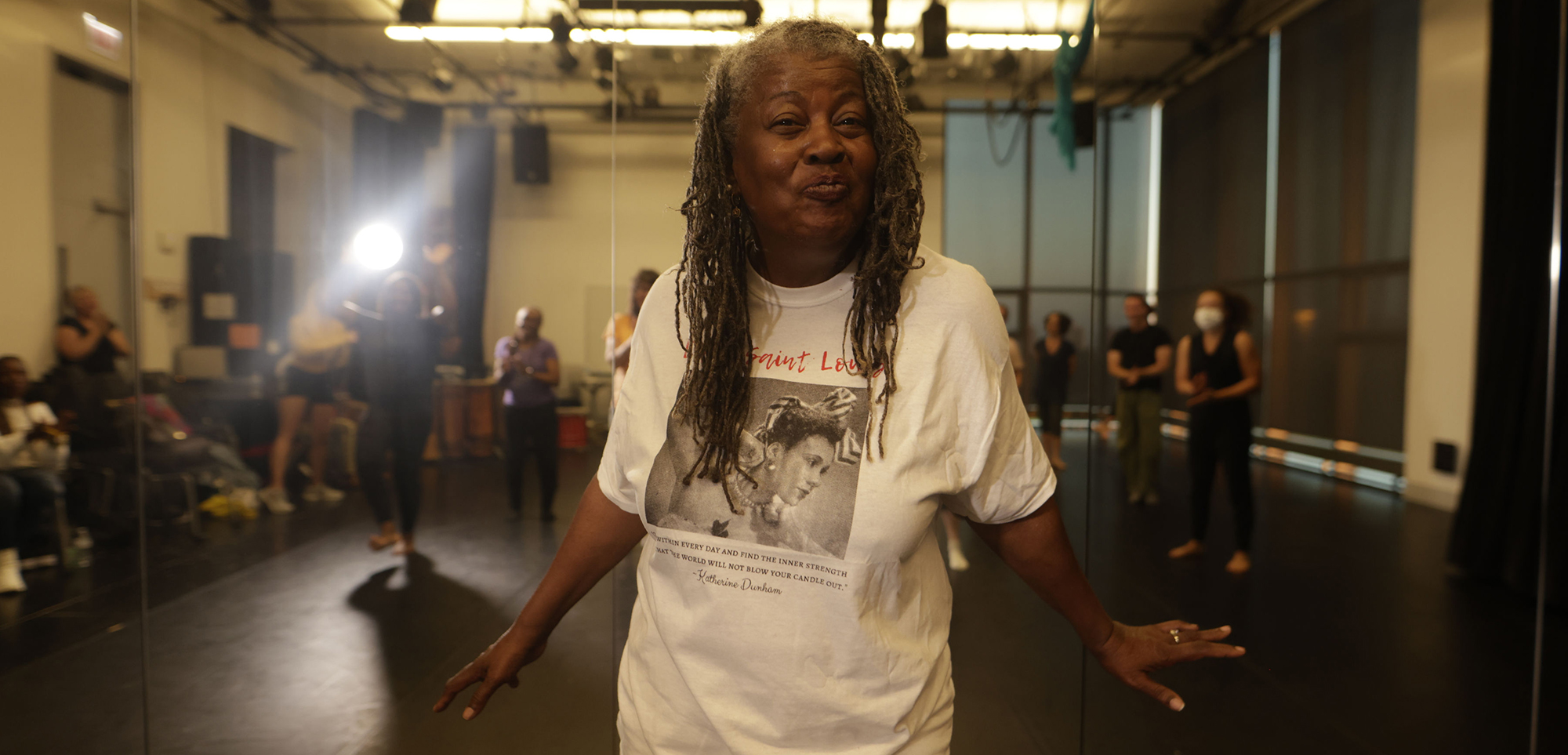
Ruby Streate studied with Katherine Dunham, PhB’36 (pictured on her T-shirt), as a teenager in East St. Louis, Illinois, in the late 1960s. (Photography by Seed Lynn)
A teach-in on Katherine Dunham, PhB’36, followed by a master class in Dunham Technique.
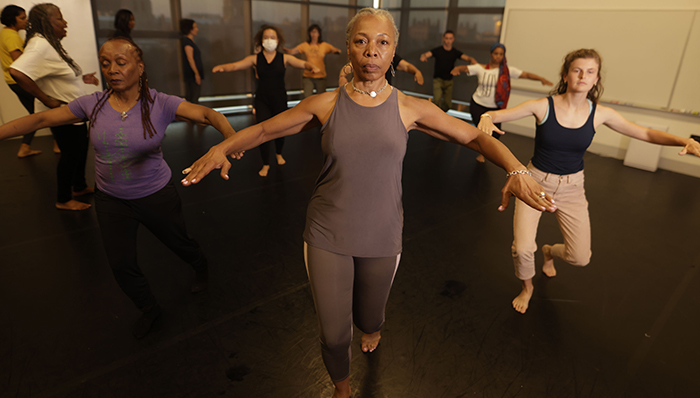
“This is where Miss Dunham’s journey began,” Ruby Streate says to the circle of dancers, drummers, and Dunham fans gathered in the Logan Center’s performance penthouse on a perfect late June afternoon. They have come for a teach-in on choreographer, anthropologist, and genius Katherine Dunham, PhB’36, born June 22, 1909.
Streate means UChicago generally, not the Logan Center. When Dunham attended in the 1930s, she majored in anthropology and had to seek her artistic training elsewhere. But Dunham, uniquely, managed to combine the two. When she was still an undergraduate, she won a grant from the Rosenwald Foundation to study dance practices in the Caribbean—a defining experience that launched her career as a dancer-anthropologist.
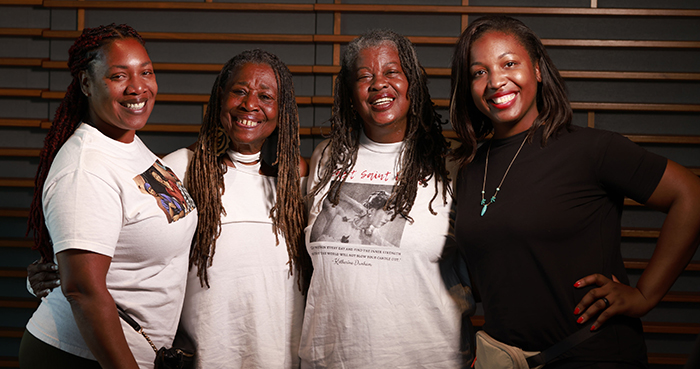
Streate began studying with Dunham as a teenager in East St. Louis, Illinois, in the late 1960s. By then, Dunham and her company of dancers and drummers had performed in “57 countries on six continents,” Streate says. With the support of Southern Illinois University, where she was a teaching artist, Dunham established the Performing Arts Training Center (PATC) for disconnected teenagers like Streate: “I was one of the young people who were part of the violence,” she says.
Dunham showed her another way. “Miss D. was never angry,” Streate says. “I’ve never endured any student with the attitude I had.” When the PATC dance company traveled to Atlanta to perform, Streate wasn’t invited: “Until you correct that attitude, you can’t travel with us,” she was told. She soon fell into line. “I wanted to get onstage.”
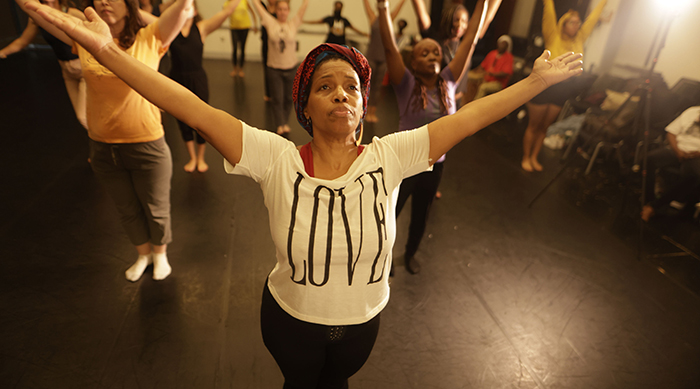
Streate sustains Dunham’s legacy at the Katherine Dunham Centers for the Arts and Humanities in East St. Louis, where she is artistic director of the Katherine Dunham Children’s Workshop. A certified Dunham instructor, she teaches classes in Dunham Technique to all ages. She is also a living repository of Dunham’s choreography. “It’s been a joy to elevate the consciousness of the young people,” she says. “And I owe it all to Miss Dunham.”
Streate's teach-in was part of the event Finding Our Freedoms: A Two-Day Rumination on Dynamic Rhythm through the Teachings of Katherine Dunham, which was supported by a Juneteenth grant from UChicago.
After the teach-in and a quick break, the group reconvenes a few floors down in a mirrored dance studio. The geography of the room shifts. Streate steps to the front of the room to teach. The drummers slip behind their drums to play. The rest line up in rows.
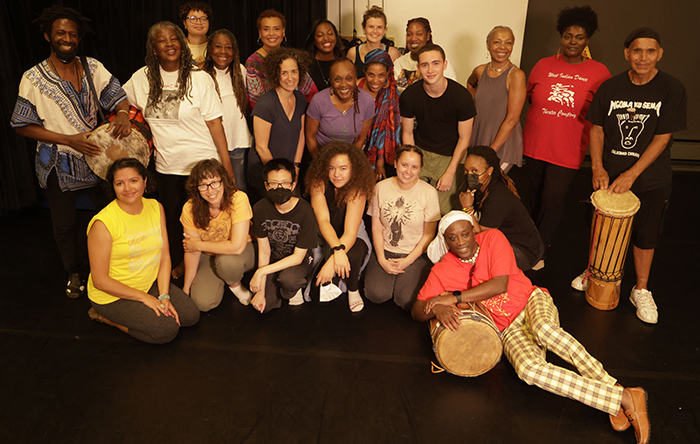
Sitting cross-legged on the floor, Streate begins the class with isolations. (These are an integral part of Dunham Technique, which later influenced jazz dance.) First the head moves, and nothing else. Then shoulders. Then ribs. “A lot of people don’t understand the ribs can move independently,” Streate says. Everyone in this class understands that just fine. Their ribs shift fluidly from side to side, front to back, as though this were an entirely ordinary thing to do.
Now, with legs stretched out in front, it’s on to feet: point, flex, circles. Then leg lifts, with the foot pointed on the way up, flexed on the way down. Then leg circles, one leg at a time: up, to the side, and down, while the rest of the body somehow stays flat on the floor. Streate has an incredible range of motion for a 70-year-old—or even a 20-year-old. “If you hear something pop,” she says, “don’t worry about it.”
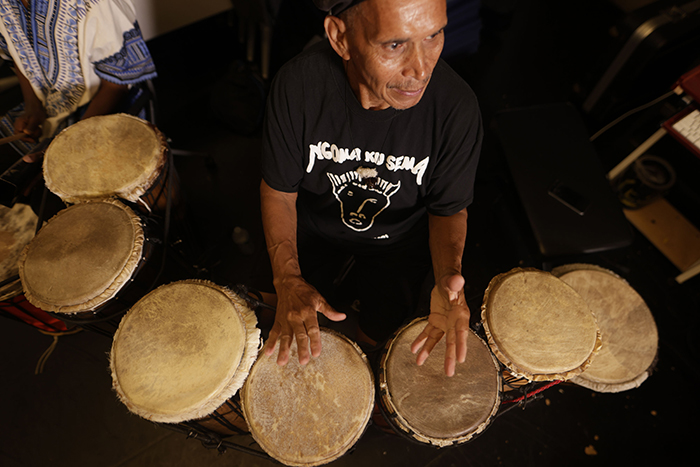
Next come progressions. Students line up in the corner—as best they can in the small room—and make their way across the floor diagonally, three at a time. First they walk across the floor, slowly. Then quickly, almost stiffly. The drum accompaniment is fast and driving.
Streate demonstrates the “Dunham walk,” with a relevé (a rise onto tiptoe) followed by a plié (a knee bend), with arms in “Dunham second”: elbows up, fingers pointing forward. The walk, Streate explains, “was inspired by the canter of a horse.” It’s hard to see at first.
But then Streate takes it to double time—twice as fast. Up and down, up and down, the dancers move rapidly across the floor. Now it’s obvious. Three by three, the dancers canter swiftly across the room. And it’s beautiful.
